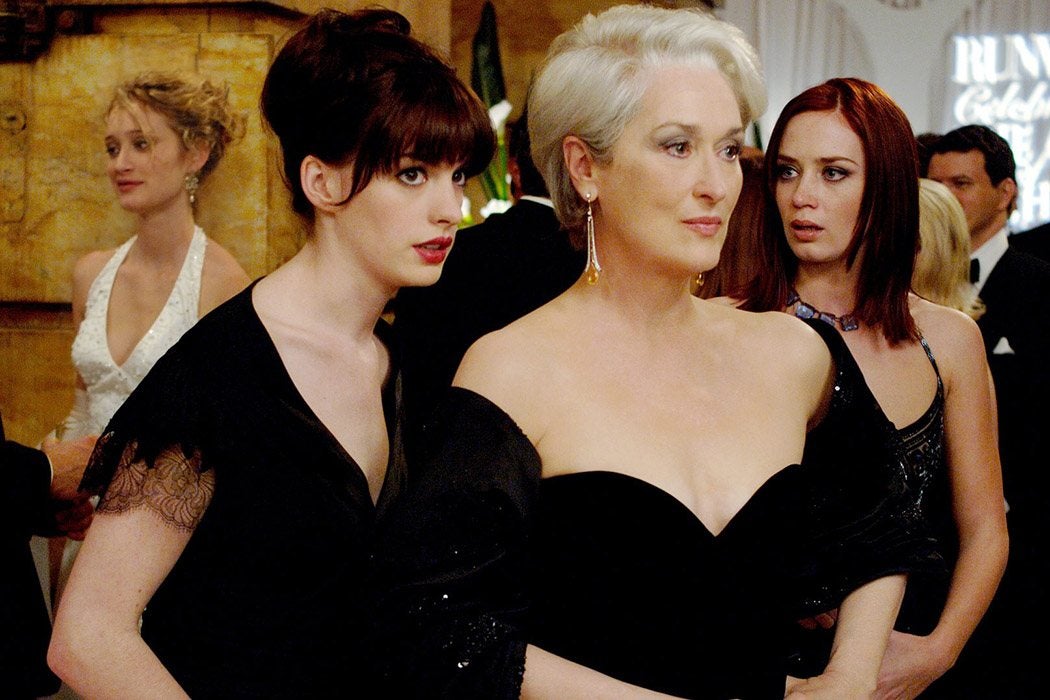Has it really been a decade since Miranda Priestly bewitched and belittled her young protege in The Devil Wears Prada? The movie turns ten this summer, and though the fashion it highlights may have faded, its portrayal of work life and killer ambition remain fresh and fascinating. Cinema scholar Thomas Doherty is most interested, however, in the movie’s depiction of fashion labels and shopping.
For Doherty, The Devil Wears Prada is just one example of what he calls “the Retail Orgy” in film. Think Julia Robert’s high-class shopping spree in Pretty Woman—Doherty’s term applies to any film portrayal of a woman that equates consumption and love.
These “quite literal money shots” showcase a shift in how women and love are portrayed on screen. While early films highlighted the ability of love to do everything from heal disagreements to bridge racial and class gaps, he writes, the power of the purse has replaced love. In rom-coms and movies like The Devil Wears Prada, Doherty finds rigid gender distinctions; including the supposed “shopping gene” that makes women long to buy.
Films that portray the shopping gene inevitably give privilege to labels, as in The Devil Wears Prada. As a “fashionista coming-of-age story in which Anne Hathaway learns what to wear and weigh,” writes Doherty, Devil’s label “gets its name on the marquee.” In other films and TV shows like Sex and the City and Legally Blonde, actual brand names (Manolo Blahnik, anyone?) become characters in the film.
So what happens when women are romanced by clothing, shoes, and designer bags? In an interesting twist, writes Doherty, men become the accessory instead. As a result, wedding films tend to be more about what Doherty calls “nuptial commodity fetishism”—and shopping—than relationships between men and women.
“What is new about the current crop of rom-coms is not the full-body emergence in consumerism but how complicit—how shamelessly whole hog—they dive into the trough,” writes Doherty. He finds the blending between “storyline and product lines” to be changing both film plots and filmgoer expectations. Ten years later, as America fondly remembers The Devil Wears Prada, product placement is perhaps even more rampant: The market is expected to grow into an $11 billion industry by 2019.







